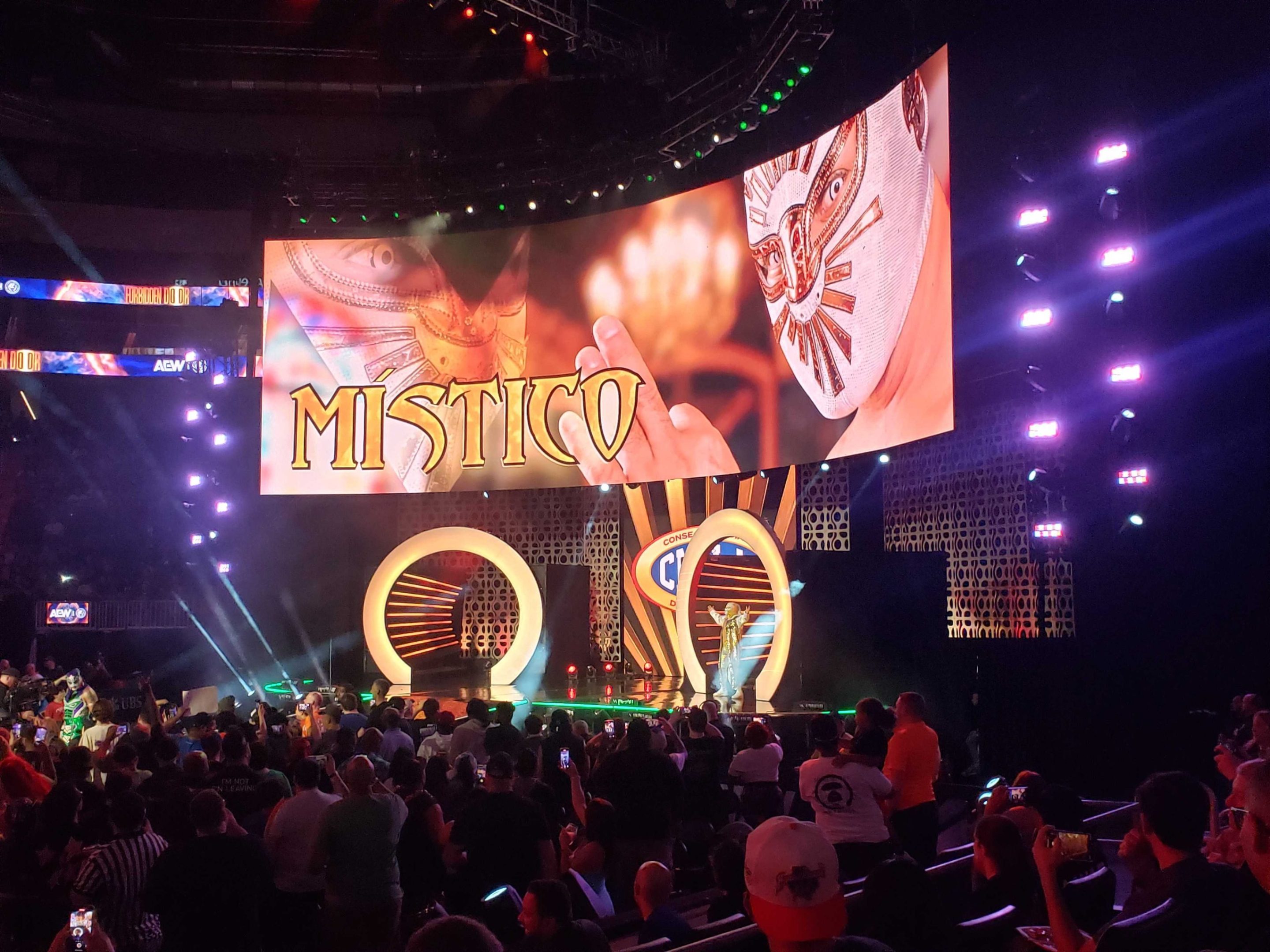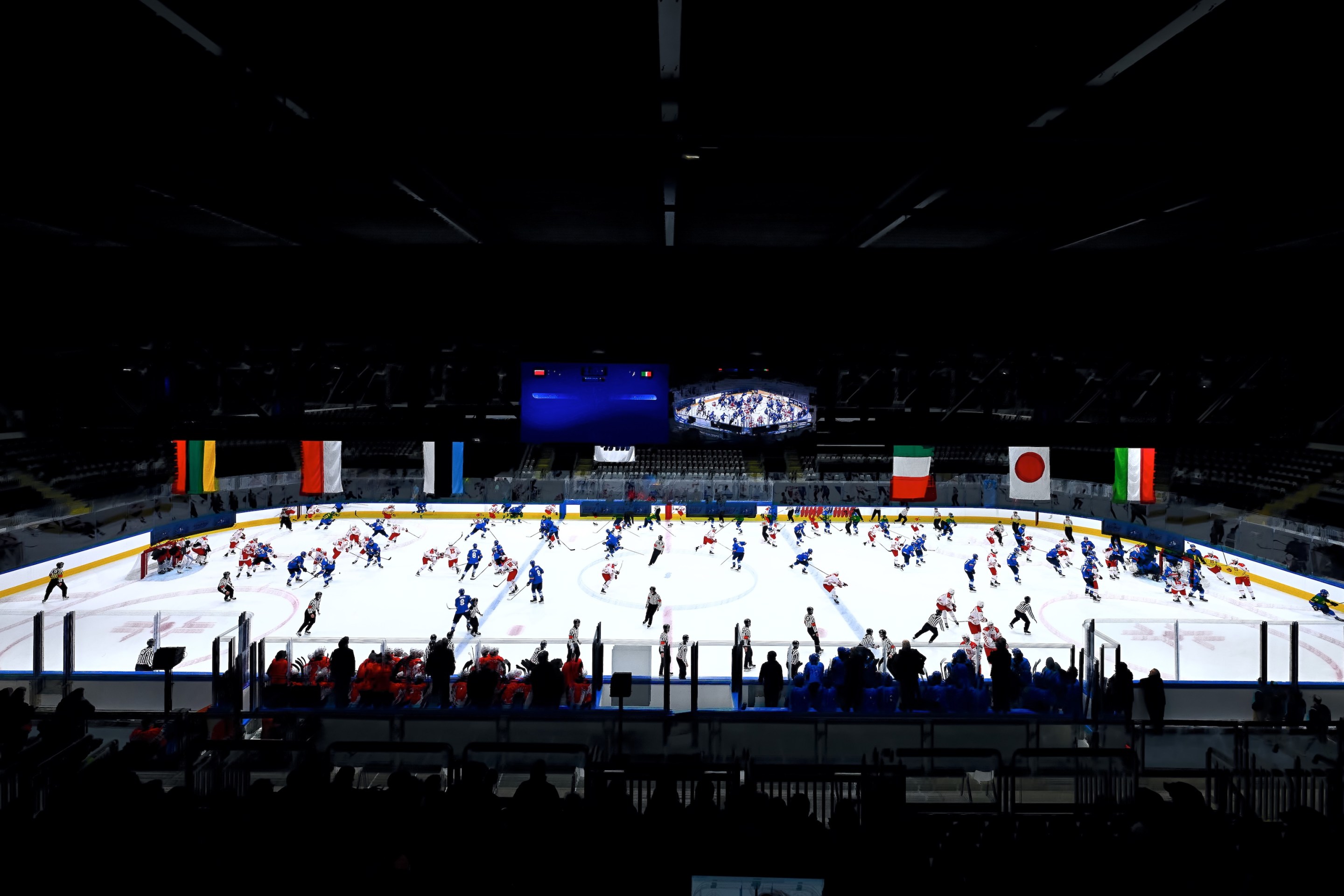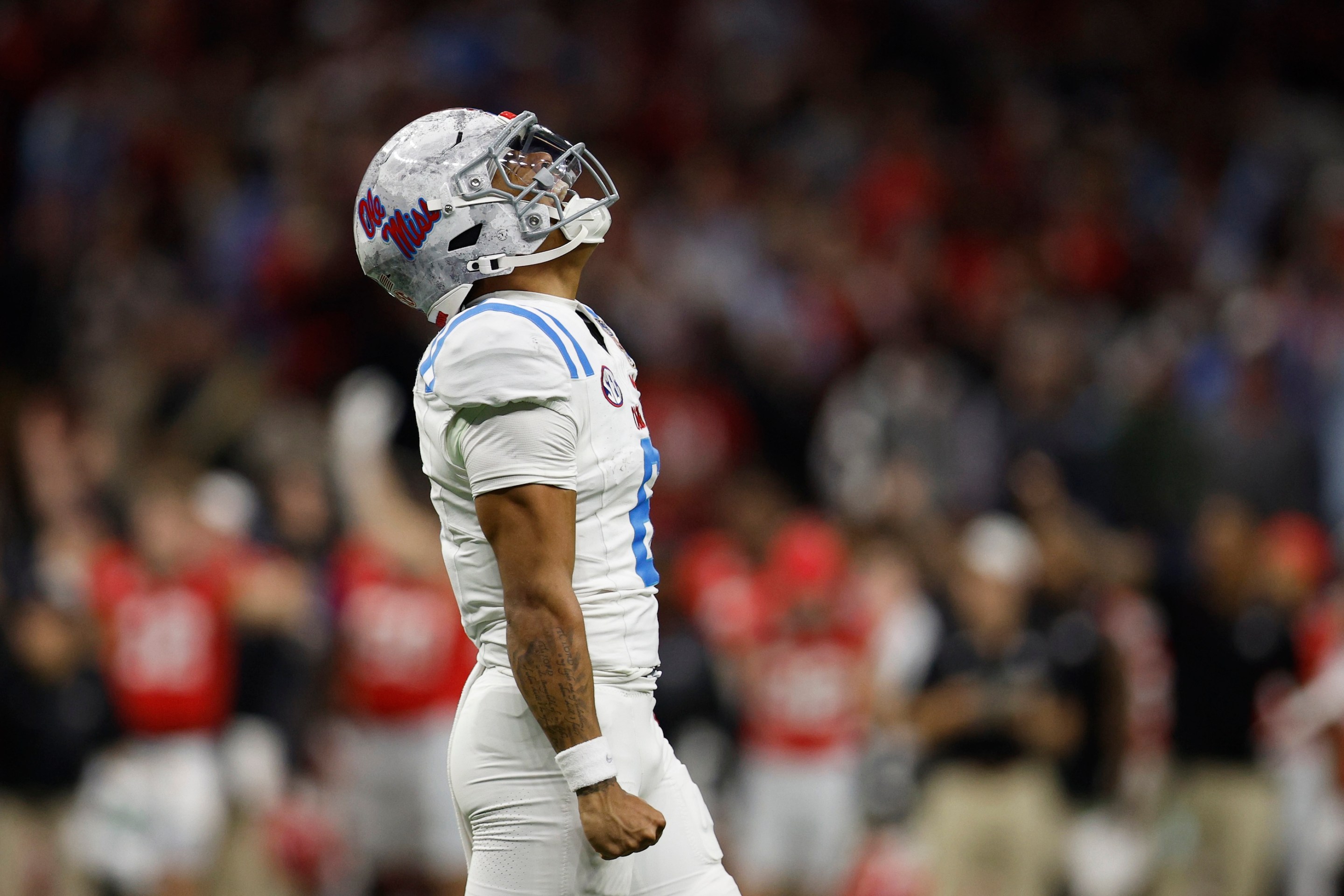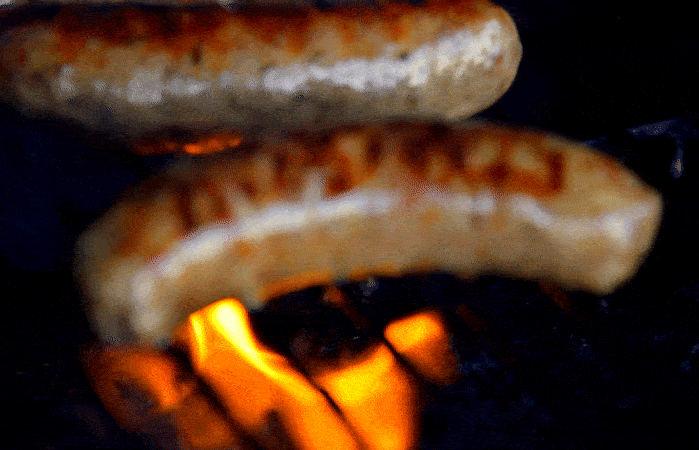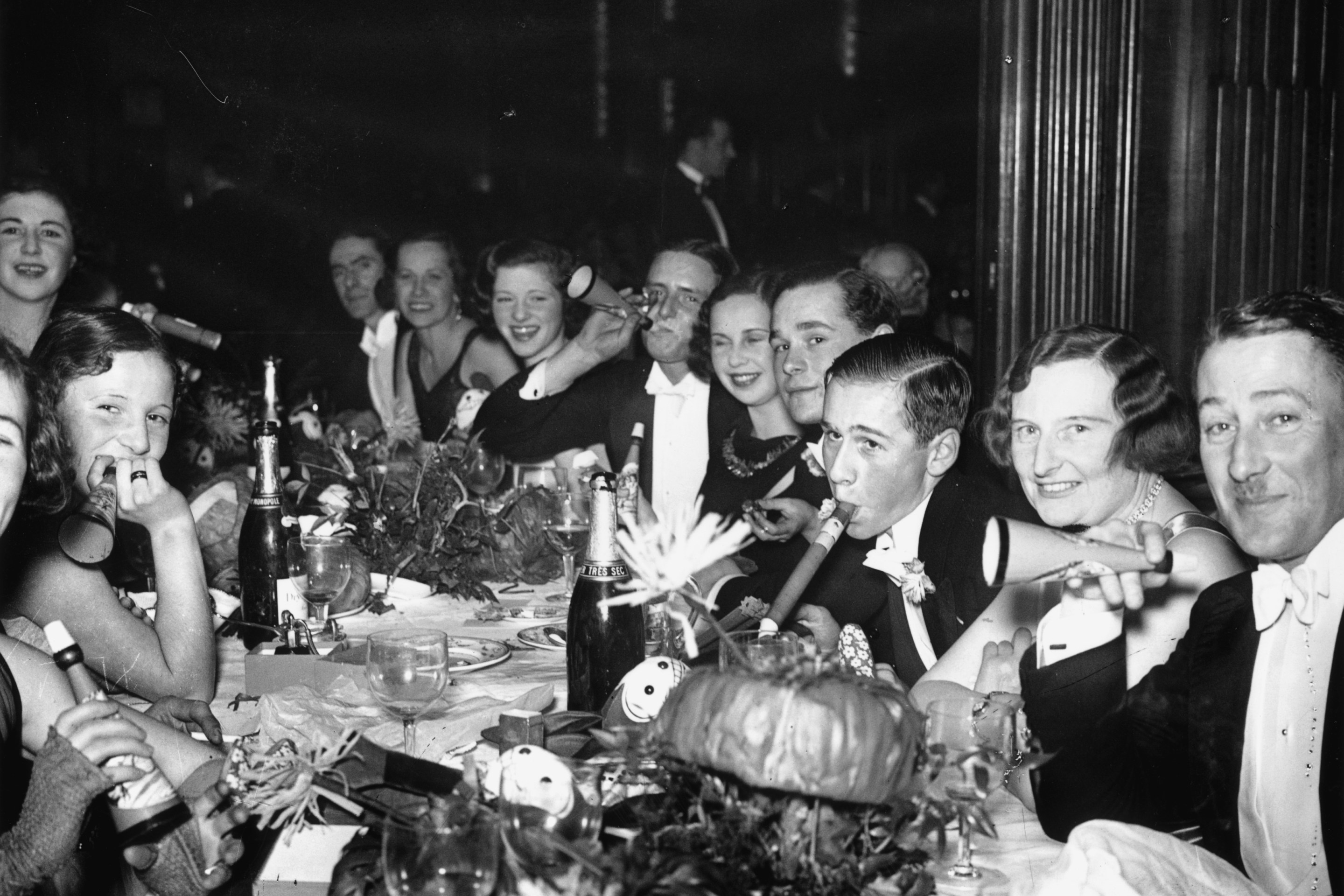ELMONT, N.Y. — I won't overwhelm you with all the calculations that resulted in me going to Forbidden Door, the annual international-crossover-centric wrestling show led by All Elite Wrestling and New Japan Pro Wrestling, which came to the Islanders' arena on Sunday night. But it was this match, announced on Thursday for the PPV's YouTube preshow, that pushed me over the edge.
This Sunday, 6/30@UBSArena
— Tony Khan (@TonyKhan) June 27, 2024
Forbidden Door Zero Hour
LIJ @njpw_yotatsuji @Titan_cmll @TIMEBOMB1105 vs
Lucha Bros @PENTAELZEROM @ReyFenixMx + @caristicomx
For the first time ever
Fenix + Penta will team with the legend Mistico in New York vs LIJ Tsuji, Titán + Hiromu THIS SUNDAY pic.twitter.com/5ANRTFvKsG
That's two guys on my wrestling bucket list: Místico and Hiromu Takahashi. Add them to the already announced Katsuyori Shibata—even if he, too, wasn't in a real featured spot—and I needed to be in the building.
Yes, I have a wrestling bucket list: a roll call in my head of all the performers that I've never seen live who I badly want to. I don't have anything similar for legitimate sports, even though, like, of course I should try to see Connor McDavid play at some point. I struggled at first to come up with an explanation for why wrestling was special. I guess there's no "home team"—no logo where my loyalties must lie forever regardless of the people who wear it, and thus no system that makes any superstar who doesn't represent that team into my enemy. But wrestling, a work of fiction that can be whatever it wants to be, can also lure me into a kind of hero worship I otherwise roll my eyes at. In a venue where charisma and creativity are the main selling points, I seek out the individuals who I think do it best.
From 6:30 p.m. to midnight(!), Forbidden Door offered something for everyone: a dramatic main event, gimmick-free wrestling-as-wrestling, a dangerous ladder match, the formation of a Sapphic throuple. Particularly when I factor in an unexpected upgrade from the cheap seats to an unsold spot visible on camera (down the Forbidden Stairs, one might say), I got my money's worth. But I was there primarily for my three guys.
Takahashi is the longtime king of the junior heavyweights in New Japan, and he makes up for a lack of stature with a feisty and energetic style and a magnetic persona. He wears these gorgeous, unforgettable outfits that practically fire colored lasers into your eyes; carries gigantic scrapbooks every time he's in a tournament, with a page devoted to each opponent; and loves a toy cat named Darryl that's almost as famous as he is. Takahashi's brand of toughness looks and feels different than the other men who populate wrestling, and frankly, he just seems like he'd be a cool hang.
Shibata is an artist who took inspiration from MMA to craft an approach to wrestling that prizes hard hits and minimal frills. His willingness to embrace legitimate danger should have ended his career after he suffered a subdural hematoma as a result of a classic match in 2017. But over the past couple of years he's apparently recovered enough to find a home in AEW, where it's absolutely miraculous how the 44-year-old has retained his never-cross-me aura. Nobody more than Shibata has helped me understand both the risks and rewards that can come with treating wrestling as a serious craft. I'm a little scared every time I see him work, but that's also a big part of the appeal.
Shibata’s aew debut at forbidden door 2022 >>>>
— griff (@MrGr1ff) September 30, 2023
And now tomorrow we get him vs Eddie Kingston pic.twitter.com/HMl1H51FUx
And then there's Místico. A high-flyer when he burst onto the scene of Mexico's venerable CMLL promotion in the mid-'00s, he's emerged from a long wilderness period that included some name changes and an ill-fated WWE stint to fully reclaim his stardom in his home territory. Bringing living-icon gravitas and veteran showmanship to the ring while still possessing more than enough athleticism for main events even at age 41, Místico is the MVP of what I'd call the least-bad wrestling company of 2024 so far. If this show were held in the Southwest, he might have been the main draw.
In New York, Místico wasn't as over with the crowd as his partners, the AEW originals Penta El Zero Miedo and Rey Fenix, aka the Lucha Brothers. In the last 20 minutes before the main PPV began, it was this tag team who soaked up the goodwill of the audience (and warmed them with their tower-of-flame entrance) as they provided the populist spark that made this trios match go. The "Zero Miedo" chant of theirs dominated, but I appreciated the one lone guy who got a "holy shit" chant to catch on just at the sight of Takahashi and his partners facing off against a lucha dream team. It echoed my sentiments. I was really happy to be there.
My advice to wrestling newcomers is this: Pick a side at the start of the match, and earnestly invest yourself in them winning. As much as I love Takahashi, everything about this match was positioned to make his team the bad guys. Whether or not those roles were locked in before the entrances, I could tell that the Japanese contingent realized the Lucha Brothers' popularity from the moment the "Zero Miedo" chants got loud, and they understood that they'd get the most out of this performance if they played into it and worked as villains who'd resort to 2-on-1 stompings and attempted mask removals.
What followed was an accessible and crowd-pleasing match that served as an ideal taste of lucha-libre trios action—interplay between distinct individuals, daredevil moves, and and a breathless climax. I would have been entertained no matter the performers, but getting to see this with the crazed Takahashi intensity and the grace of Místico was a special treat. You can watch the whole thing!
Shibata performed in a trios match placed sixth on the main card, and he got lost in the shuffle a bit. Disappointingly, they truncated his entrance music, leaving little time to appreciate its uncharacteristically pretty guitar intro. Shibata has not been presented in AEW as special—the hardcores obviously know his whole deal, but his role is primarily that of a respectable person to lose against a bigger star. Thus, it required a lot on my part to appreciate him. My mind was swimming from all the wrestling I'd already seen, and I kind of had to peek around his tag partners, Hook and Samoa Joe, to track Shibata after he first entered the ring. But I got my moment—a good clean look as he delivered some stinging chops to Chris Jericho in a neutral corner. I made sure to capture it, however blurry, with my six-year-old phone. After all the long-distance admiration (and concern) I'd felt for Shibata, this real-life view of him without anything between us felt like the closest connection I'd ever share with a stranger who's held sway over so many of my emotions. My ticket, my cheers, my eyes were the best I could offer him.
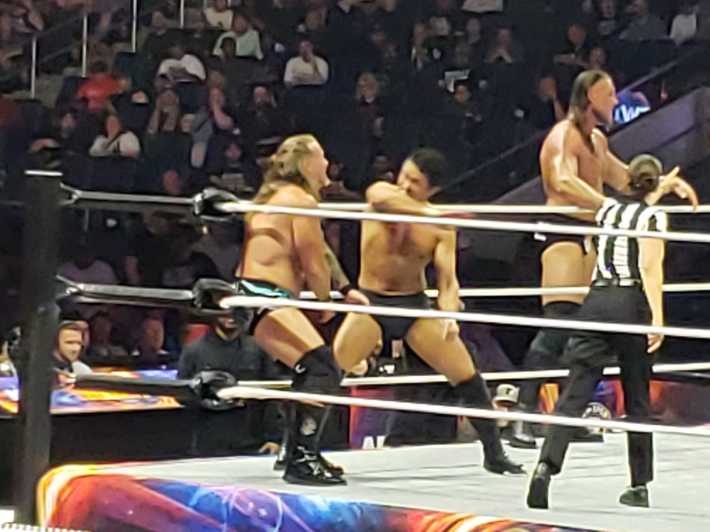
It's satisfying when I'm able to mentally strip away the fake heroism of wrestling, and all its pomp, down to the true flesh and blood; to watch the performer and athlete behind the character. To see them work, in other words, these men who are very, very good at their jobs. It's easier to do when I see them live, when there's no screen and no production to make them seem both larger than life and so far away. AEW moved me downstairs to make the show look better on TV, but there's no magic quite like the real thing.
